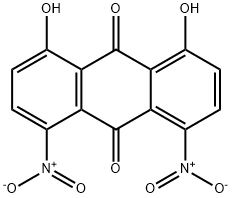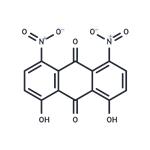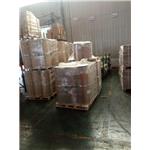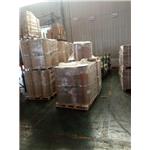Chemical Properties
brownish-gold solid
Uses
1,8-Dihydroxy-4,5-dinitro-9,10-anthracenedione is a NS2B-NS3 protease specific inhibitor that is used for treatment of Dengue and West Nile virus infections.
General Description
Brownish gold solid.
Air & Water Reactions
The neat (pure) material is sensitive to air and may be sensitive to light. . Insoluble in water.
Reactivity Profile
A nitrated alcohol and a ketone. Flammable and/or toxic gases are generated by the combination of alcohols with alkali metals, nitrides, and strong reducing agents. They react with oxoacids and carboxylic acids to form esters plus water. Oxidizing agents convert them to aldehydes or ketones. Alcohols exhibit both weak acid and weak base behavior. They may initiate the polymerization of isocyanates and epoxides. Ketones are reactive with many acids and bases liberating heat and flammable gases (e.g., H2). The amount of heat may be sufficient to start a fire in the unreacted portion of the ketone. Ketones react with reducing agents such as hydrides, alkali metals, and nitrides to produce flammable gas (H2) and heat. Ketones are incompatible with isocyanates, aldehydes, cyanides, peroxides, and anhydrides. They react violently with aldehydes, HNO3, HNO3 + H2O2, and HClO4.
Fire Hazard
Flash point data for 1,8-Dihydroxy-4,5-dinitroanthraquinone are not available, however, 1,8-Dihydroxy-4,5-dinitroanthraquinone is probably combustible.
Synthesis
1,8-Dihydroxy-4,5-dinitroanthraquinone is prepared from 1,8-diphenoxyanthraquinone
by nitration followed by
alkaline hydrolysis or, alternatively, by nitration
of 1,8-dihydroxyanthraquinone in oleum in the
presence of boric acid and isolation after the
sulfuric acid concentration has been adjusted to
80 – 100 % or, using the same procedure,
from 1,8-dimethoxyanthraquinone followed by
ether cleavage.




